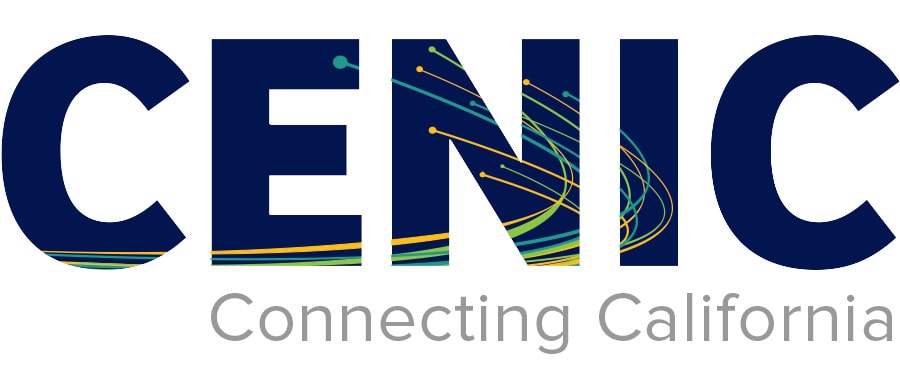
Broadband in K-12 Schools Boosts Teaching Practices and Learning Outcomes
A robust and reliable Internet connection has become a key ingredient in any future-oriented US educational system. At CENIC’s 2019 Conference, instructional technology leaders from two vastly different California school districts — one in an agricultural region near the Mexican border in Imperial County and one in the heart of the Silicon Valley in San Mateo County — shared how they’re leveraging their CENIC connections to use the same digital tools.
“Connectivity is now king,” said Antonio Romayor Jr., chief technology officer at El Centro Elementary School District. “Your zip code doesn’t necessarily matter. That’s the benefit that we can provide, utilizing the broadband that our students have available through CENIC.”
Integrating technology into lessons
According to the Brookings Institution, several meta-analyses of educational technology research show that when technology is integrated into lessons in ways that are in line with in-person teaching practices, learning outcomes are better than without technology. Moreover, digital learning, when deployed across ethnic, socio-economic, and geographic groups, ensures that no student experiences a 21st-century skills and opportunity gap.
High-speed Internet is transforming K-12 education and redefining the way we teach and learn. Digital learning helps cultivate relationships between teachers and students, reinvent approaches to collaboration, shrink long-standing achievement gaps, and tailor personalized learning experiences to meet the needs of all students.
CENIC’s California Research and Education Network (CalREN) now provides broadband internet access to 100% of county offices of education, 87% of school districts (904), 83% (8,739) of schools, and over 5 million students statewide. More than half of K-12 schools are connected at 1 gigabit per second or more.
Accessing the Same Learning Opportunities
Students at any school with access to high-speed broadband can get the resources they need to be successful. Most of the students at El Centro Elementary School District in Imperial County are eligible for free and reduced-price school meals due to their households’ low income levels. Imperial County’s unemployment rate stands at 16% — four times greater than the state’s overall jobless rate of 4.2%.
In stark contrast, many of the students at Portola Valley School District are the children of Stanford University professors and high-tech corporate executives. The median home price in Portola Valley is over $4 million. Still, students at both schools are learning computer coding, creating virtual reality content, and video conferencing with experts around the world.
“We’re helping students develop the same skills because we have the leadership, guidance, and support of the [K-12 High Speed Network] and of our regional networks and local networks,” said Jason Borgen, former director of learning and innovation at Portola Valley and now chief technology officer at the Santa Cruz County Office of Education. K12HSN is a California Department of Education program that administers K-12 participation in CENIC’s broadband network.
Mimicking the Real World
The computer revolution has changed our world. Today’s students are digital natives. They’ve grown up with technology and they expect to use it for learning, Borgen and Romayor said.
Each year, the Speak Up Research Project for Digital Learning, a national initiative of the nonprofit Project Tomorrow, asks K-12 students, parents, and educators about the role of technology in and out of school. Some highlights from the latest survey include:
- More than 90% of high school students have a smartphone.
- In high schools, Chromebook use tripled between 2014 and 2017.
- In middle schools, students say technology helps them get better grades (54%), learn at their own pace (53%), and develop creativity (50%).
- Three-quarters (77%) of middle school students and 90% of high school students regularly find and watch online videos to learn how to do something when they are at home.
- Two-thirds (66%) of young readers in grades K-2 students prefer to read on a screen with audio and other interactive features than from a printed book.

Preparing for Jobs of the Future
Schools need to prepare students to thrive in digital technology jobs that are driving the economy and continuing to evolve. Many of today’s jobs — such as cloud computing specialist, big data analyst, and social media manager — didn’t exist 15 years ago. Borgen asked: “What needs to happen in the classroom in order for them to be fully prepared for the future workforce?”
The International Society for Technology in Education (ISTE) is helping educators worldwide re-engineer schools and classrooms for digital age learning. ISTE has developed widely adopted standards, including how to teach students to be a responsible digital citizen, knowledge constructor, innovative designer, computational thinker, and global communicator.
“We need to prepare for the unknown and to help students design and build the skills to be collaborative, to be creative, and to continue to stay in the forefront with new technologies,” Borgen said. “We need to bring new technologies inside of our classrooms, not just leave them in the technology industry.”
Watch Borgen and Romayor’s presentation, “Broadband Improvement Drives Transformative Pedagogy,” from CENIC’s 2019 conference. For more stories about the California Research and Education Network, see CENIC’s blog.
For more information please contact our contributor(s):

